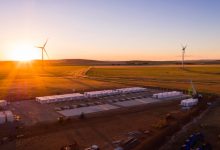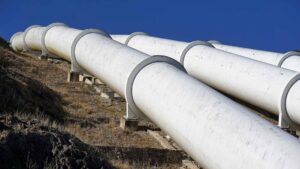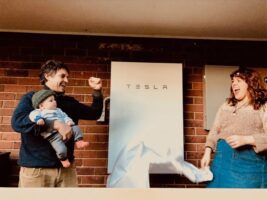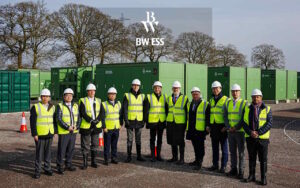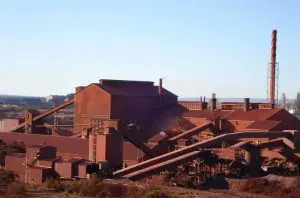The first stage of what will amount to Australia’s biggest storage tender has been formally kicked off, with registrations opening for 600MW and 2400 MWh of dispatchable capacity to be deployed in South Australia and Victoria, the states with the biggest share of variable wind and solar power.
The registrations are the first step in the opening tender under the Capacity Investment Scheme, the mechanism agreed by state and federal governments to replace the previous Coalition government’s farcical Underwriting New Generations Investment scheme, which resulted in not a single megawatt of capacity being built.
The launch was made by federal climate and energy minister Chris Bowen and Victoria counterpart Lily D’Ambrosio at an event near Melbourne on Wednesday.
The new tender is designed to help fill some of the gaps identified by the Australian Energy Market Operator in its recent 10-year forecasting document, known as the Electricity Statement of Opportunities.
A recent update, forced by the extension of the extremely tight “interim reliability standard”, which sets a maximum share of “unserved energy of 0.0006 per cent over a year, identified a potential major gap in South Australia in 2026/27.
The joint announcement by the federal, Victoria and South Australia governments said eligible projects needed at least two hours storage, although the total average sought is four hours of storage, or 2,400 MWh, as was first flagged back in August.
That means some storage proposals with longer duration could make up for any shorter duration winners.
See: Victoria and South Australia seek 2,400MWh of storage in fast-tracked capacity tender
South Australia already has more than 70 per cent of its local demand met by wind and solar, and aims to reach 100 per cent in coming years, while Victoria has around 35 per cent wind and solar (plus five per cent hydro) and has a legislated target of 95 per cent renewables by 2035.
The winning storage projects will be guaranteed a minimum amount of revenue over a period of 15 years, but will also share any “super profits” with taxpayers when revenues are higher than expected.
“The CIS program is open for big projects that can store energy for at least 2 hours and are at least 30 megawatts in size and will be open to different types of energy storage like batteries and hydrogen,” the joint statement said.
Bowen said the tender would seek 200MW of capacity in each of Victoria and South Australia, and 200MW of capacity in either state based on the next best offerings.
“South Australia and Victoria are very closely linked grids, and it makes sense to do this together,” he told reporters.
“We are working to identify and to eliminate the foreseen gaps in our renewable energy system. AEMO does important work in advising governments and investors about where gaps could emerge, and this Capacity Investment Scheme will ensure that those gaps are dealt with well in advance.”
South Australian energy minister Tom Koutsantonis said in a statement the additional capacity will help fill in the gaps and firm supply “as we power ahead to net 100 per cent renewables.”
The CIS auction is just one of a number of programs designed to support battery and other storage projects across Australia’s main grids.
The Victoria government has received responses from more than 100 potential battery projects, collectively representing 30GW of capacity with various levels of storage, for funding support from its newly formed State Electricity Commission and its $1 billion investment fund.
Victoria has its own targets of 2.6GW of energy storage capacity by 2030 and 6.3GW of storage by 2035, in support of its 95 per cent renewable energy target mix by that date.
“Victoria is already the home of big batteries, and this auction will give projects extra support to get projects online quicker, helping us achieve our ambitious energy storage targets of at least 2.6 gigawatts by 2030 and 6.3 gigawatts by 2035,” D’Ambrosio said in a statement.
“Energy storage is critical to reaching Victoria’s renewable energy target of 95 per cent by 2035 and delivering cheaper, more reliable energy to homes and businesses across our state.”
NSW is also running a series of auctions, over and above the capacity sought in conjunction with the federal government with the specific task of filling the gap created by the impending closure of the Eraring coal generator.
The Eraring gap is being plugged by 930 MW of storage capacity, with two hours storage, as part of concurrent and interlinked tenders. NSW and the federal government are currently working their way through the applications, with an announcement likely before the end of November.
NSW is also seeking long duration storage, which it defines as eight hours minimum, through a series of tenders under its renewable infrastructure roadmap.
The first tender resulted in a single 50MW eight hour battery to be built by German energy giant RWE, and the final applications for the second round of up to 600 MW are being assessed now, with a third tender to be also launched before the end of the year.
The original idea was to capture some pumped hydro projects within this tender, but because of their long lead times, and the jump in public works costs, these are now likely to be covered by special grants or disbursements made through the NSW government’s Energy Security Corporation.
In Queensland and Western Australia the rollout of battery storage is more controlled because the state governments own the main utilities and much of the generation.
Queensland is building a series of big batteries at the sites of its main fossil fuel generation centres – including Stanwell, Tarong and Kogan Creek, and other batteries are being built by private interests such as Neoen and Genex.
In Western Australia, the government owned utility Synergy is building the country’s biggest battery, a 500MW, four hour (2000MWh) facility at Collier, and a 200 MW, four hour battery at Kwinana, adding to the newly commissioned 100 MW, two hour battery at the same site.
Neoen is also building its own 219 MW four hour battery at Collier, and Alinta is building a 100 MW, two hour battery at Wagerup, both with the support of contracts with AEMO to time shift the output of solar from the middle of the day to the evening peaks.
See also RenewEconomy’s Big Battery Storage Map of Australia

